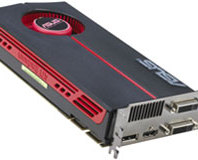What's the Fastest Current Graphics Card?
September 17, 2009 | 11:32

Folding@Home
Creator: Stanford UniversityFolding@home is possibly the most successful GPGPU application at the moment, with ATI pioneering GPU-based folding years ago with its Radeon X1000 range of GPUs. Since then, folding has spread to the point where Nvidia has supported folding on all GPUs since its GeForce 8-series.
Folding is a client-based distributed computing application that simulates protein folding to aid our understanding of complex diseases such as Alzheimer's, Mad Cow Disease (BSE), CJD, ALS, Huntington's, Parkinson's disease, and many Cancers and cancer-related syndromes. To add some interest to the furthering of scientific and medical research doesn't hold any interest for you, Stanford also has team- and user-based leaderboards, so folding is also a competition.
To fold on your GPU, visit the High Performance Client page and download the latest version. The client downloads work units (aka 'projects') from Stanford, and each work unit is worth a certain amount of points.
You can monitor your folding progress via the FahMon tool, which will calculate how quickly your card can get through the current work unit and extrapolates a points per day (ppd) figure. You can join the bit-tech and Custom PC folding team (currently ranked fifth in the world) by using the team number 35947. Your contribution is valued.
No surprises here, with the dual GPU GTX 295 easily claiming the round with a massive PPD of 15444 in exchange for a peak power consumption of 315 watts. The single GPU GTX 285 is also impressive, producing close to nine thousand PPD while drawing a more electricity bill friendly 248 Watts.
The HD 4870 X2 is the big loser here though, somewhat ironically considering that ATI's Catalyst driver has Folding@Home built in. With a measly PPD of less than 2.5k despite drawing a whopping 300 Watts, it's an inefficient, poor choice for folding. The Radeon HD 4870 X2 also suffers from being unable to unlock its second GPU for folding without a huge amount of effort and patience, unlike the GeForce GTX 295 for which it was comparatively simple unlock the second GPU for folding.
There's no contest here then - the GeForce GTX 295 takes the round: 4-2 to Nvidia.

MSI MPG Velox 100R Chassis Review
October 14 2021 | 15:04








Want to comment? Please log in.